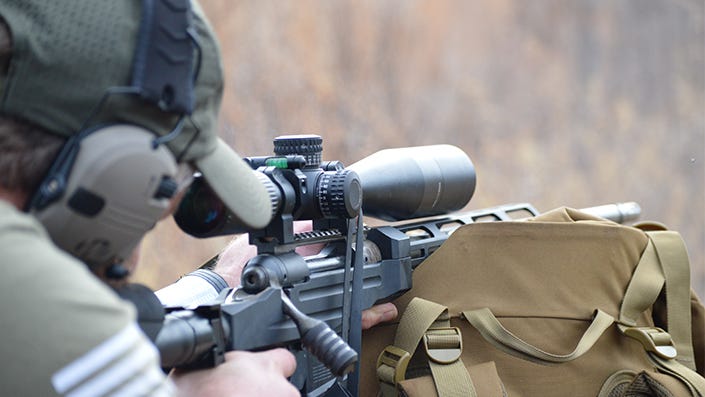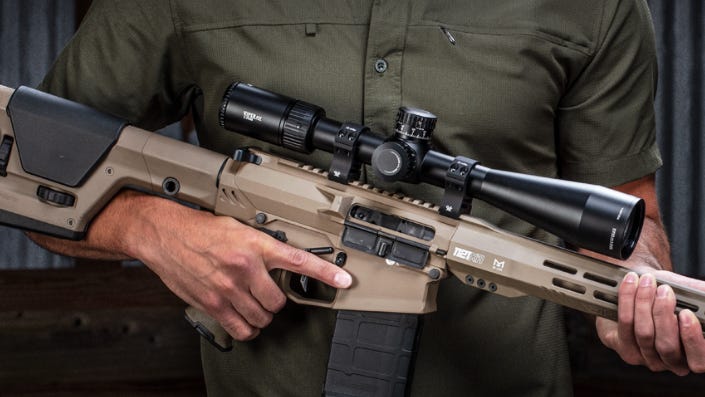How to choose the best rings/bases for your rifle
There are a bazillion different kinds of guns out there, many of them tricked out to meet the owner’s exacting demands, so it's impossible to lay out what rings and bases are needed for every single setup, but we'll go over a few of the classics we see all the time.
Traditional bolt gun (No handguard or other accessories covering the barrel)

A one piece Picatinny rail, which we can almost guarantee you can find from our friends at EGW (Evolution Gun Works) for a reasonable price for almost any gun, is the best base. On top, get a two-piece ring set in the absolute best quality you can afford. Heck - skimp on scope if it means you can get a nicer set of rings.
For darn near any riflescope and traditional bolt gun setup, medium height rings will work just fine. Don't fall under the idea that the scope MUST be mega low to the barrel - the differences are moot performance-wise, and if you get it so low, you're always smashing your face into the stock just to see through the scope, you've put yourself at a disadvantage. Only go high for clearance reasons - a scope that's mounted too high will also result in an uncomfortable and inconsistent cheek weld.
AR-15 and similar flat top carbines with handguards over the barrel

Use a one-piece cantilever mount rather than a two-piece ring setup. One-piece cantilevers allow you to keep the whole mount back over the receiver, so none of it must mount to any portion of the handguard, which is often a separate piece and could present alignment issues if used with two-piece rings. Cantilever mounts also raise the scope up high enough for a comfortable cheek weld with the stock directly in line with the receiver, and they push the scope forward far enough to get proper eye relief for the best optical quality and most forgiving eye box when shooting.
It's important to note - some people really want to keep a set of backup irons on their gun, even though backup irons are solely developed to be a backup aiming device for red dots and holographic sights which, if their battery dies, have literally no point of aim at all. Any riflescope or prism scope with a physical reticle, whether illuminated or not, doesn't need this kind of backup, because if a battery dies, then you still have the reticle as a point of aim. If the whole scope is destroyed beyond the point of being any use, then you probably have bigger fish to fry besides taking it off and using your iron sights anyway.
Regardless, if you MUST use backup irons, then be mindful of the mount height as well as your eyepiece diameter in order to clear that rear sight. If you have a set of low-profile irons, then you should be good with a normal cantilever mount). If you have a bigger, bulkier rear backup sight, then you may need to take some measurements and compare against the dimensions given on the riflescope and mount manufacturer’s websites.
As always, if you have any questions about rings, optics, or you just want to share a great build, give one of our experts a call at 1-800-426-0048.
Learn more about choosing riflescope rings and mounts: VortexLIVE: How to Select Riflescope Rings and Mounts.
Learn how to properly tighten riflescope rings: How To: Tighten Riflescope Rings.
Learn how to properly mount your riflescope: How to Mount a Precision Riflescope and Vortex Nation Podcast - Ep. 14 | Semi-Live: Scope Mounting – It’s Easy!.
It’s our hope you can learn and laugh along with the expert voices we feature on this blog. We want to be clear that the opinions you see featured here are just that: opinions. The content belongs to the authors and is not necessarily the opinion of Vortex Optics.
To learn more about what you’ve read, please like, follow, and otherwise support our authors.










